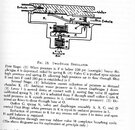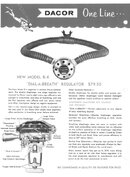The United States Navy Experimental Diving Unit: Testing in Antartica
"At its inception in 1947 (through the US Naval Support Force Antarctica) through 1967 the USAP diving program issued double-hose regulators to NSF scientific divers. In 1991, double-hose regulators were retired from service and replaced with single-hose, modified Sherwood Maximus SRB3600 regulators. A heat retention plate was fitted over the second-stage exhaust valve and around the air delivery lever and the intermediate pressure detuned from 145 to 125 psi to reduce the probability of free-flow in supercooled sea water at -1.86oC in McMurdo Sound. The decision to investigate replacement regulators was influenced by the age of the 1991 Sherwood models, their less than optimal breathing characteristics, and the lack of continued parts availability in 2008 to avoid potentially catastrophic regulator failure."
So the US Navy issued double hose regulators from approximately 1947 until their retirement in 1991 for its divers in Antarctica. Good enough for me. I've never had any issue with my Phoenix equipped DAAM, nor Argonaut when ice diving. 44 years of Navy use means something.





